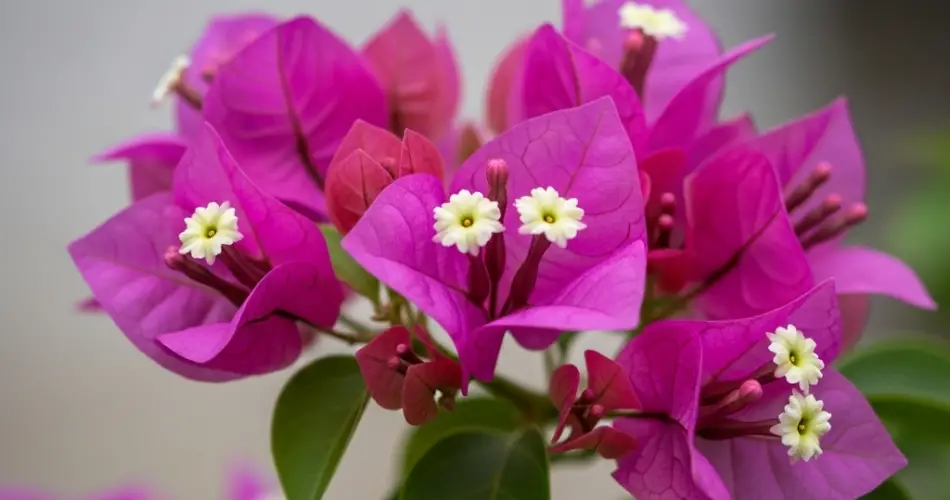Bougainvillea is admired for its vibrant, papery bracts that add bursts of color to gardens, walls, and containers. Native to South America, this tropical vining shrub thrives in warm climates and is prized for its ability to bloom profusely with minimal care. However, one of the most important factors in encouraging lush growth and vivid color is proper sunlight exposure.
So, how much sun does bougainvillea really need? In short—plenty. But let’s explore why sunlight is so vital, what happens when it’s lacking, and how to ensure your bougainvillea receives the right amount of light for year-round beauty.
Bougainvillea’s Sunlight Needs
Bougainvillea is a sun-loving plant that requires a minimum of 6 hours of direct sunlight per day to thrive and bloom well. In fact, the more sunlight it receives, the better the plant performs. For optimal flowering and vibrant bract coloration, 8 or more hours of full sun is ideal.
When grown in less than 5 hours of sun daily, bougainvillea may survive, but it will likely become leggy and fail to produce its signature colorful bracts. This plant does not perform well in shade or filtered light, and low-light conditions often result in poor flowering and weak growth.
Why Sunlight Is Essential for Flowering
What many people consider “bougainvillea flowers” are actually bracts—modified leaves that surround the plant’s tiny, true blooms. These bracts are what give bougainvillea its rich pinks, purples, oranges, reds, and whites. For these bracts to appear and maintain their intensity, the plant needs ample light to stimulate its flowering cycle.
Without sufficient sunlight:
-
Photosynthesis slows down, reducing overall plant energy.
-
Bract production is limited, leading to green foliage without color.
-
The plant may grow taller and spindly, searching for more light.
Essentially, light is the fuel bougainvillea needs to show off its full potential.
Best Sun Conditions for Different Settings
Depending on where and how you’re growing your bougainvillea, consider these recommendations to provide the right light:
In-Ground Planting
-
Choose a south-facing or west-facing location that receives direct sun for most of the day.
-
Avoid areas that are shaded by trees, buildings, or other plants.
-
Good air circulation and reflected heat (from walls or pavement) can enhance flowering.
Container Planting
-
Place pots in the brightest spot possible, such as a sunny patio, balcony, or terrace.
-
Rotate the container occasionally to ensure all sides receive equal sunlight.
-
If the plant is indoors, set it next to a south-facing window or use a grow light during winter months.
What Happens in Low Light?
Bougainvillea grown in insufficient light may exhibit the following symptoms:
-
Few or no blooms, especially during the flowering season.
-
Pale green or yellowing leaves, due to decreased chlorophyll production.
-
Slow or stunted growth and thin, weak stems.
-
Increased risk of pests and diseases, as the plant becomes stressed.
If your bougainvillea isn’t blooming, one of the first things to check is its light exposure. Often, simply moving it to a sunnier location can revive its blooming cycle.
Sunlight in Different Seasons
In tropical and subtropical regions, bougainvillea may bloom almost year-round with consistent sun exposure. In temperate climates, sunlight levels decrease during fall and winter, which can reduce flowering. The plant may enter a semi-dormant state, especially if kept indoors or in a greenhouse.
To maintain healthy light levels during low-light months:
-
Move container plants indoors to a sunny room or conservatory.
-
Supplement with grow lights if natural sunlight is limited.
-
Keep pruning and watering minimal to reduce plant stress during its rest period.
Tips for Maximizing Sunlight Exposure
-
Trim nearby trees or shrubs that may cast shadows over your bougainvillea.
-
Use reflective surfaces like white walls or gravel to bounce extra light toward the plant.
-
Keep windows clean if growing indoors to maximize light penetration.
-
In containers, use plant caddies or stands to easily reposition plants with the sun’s movement.
Final Thoughts
To enjoy the full brilliance of your bougainvillea, sunlight is non-negotiable. This tropical beauty simply cannot flourish in shade or dim conditions. Aim to provide at least 6–8 hours of direct sun daily, and you’ll be rewarded with vibrant cascades of color that last from spring through fall—and possibly all year, depending on your climate.
Whether climbing a fence, spilling over a balcony, or brightening a sunny courtyard, bougainvillea delivers unforgettable blooms when bathed in sunshine. Make light a priority in your care routine, and your plant will thrive.



